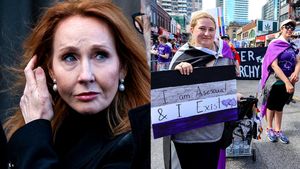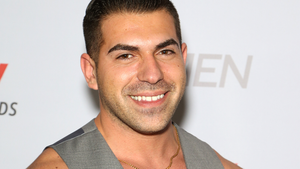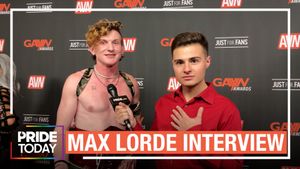I'm
interrupting my Transgender 101 Series to pass along some
big news for transgender people from this
week's release of the 2006 Human Rights
Campaign Corporate Equality Index (CEI) and the Out and
Equal 2006 Workplace Summit in mid September.
HRC gave those of
us attending the Out and Equal Summit a sneak peak at
the 2006 CEI results released on September 19. The annual
CEI is a tool to measure how equitably companies are
treating their gay, lesbian, bisexual, and transgender
employees, consumers, and investors. Scoring 100% each
year is rapidly becoming essential for major employers.
This year, HRC
raised the bar to include transgender parity in at least
one of five wellness benefits, and the results are exciting.
Of the 446 companies in the survey, a total of 303
companies offer at least one of the specified benefits
for their transgender employees, and a staggering 67
offer all five. More impressively, 28% of the employers
provide health benefits for
trans-related surgical procedures.
HRC told us that
some companies are surprised to find that their health
insurance coverage excludes gender identity-related
treatments. The language is often in the master policy
because it is the "standard" offering
from the insurance company. Once employers learn this, it is
often only a matter of demanding that their insurers remove
the exclusion.
The exclusion is
standard because of fears over the cost of inclusion.
But Mary Ann Horton, in her eye-opening Out and Equal
session on "The Cost of Transgender Health Benefits,"
showed convincingly that the cost is considerably less
than that of domestic partner coverage, even when
taking into account a generous margin of error.
Horton backed up
her calculations with the experience of the City and
Country of San Francisco, which has provided
comprehensive transgender health coverage since 2001.
Their actuaries knew there were 27 transgender
municipal employees, and therefore geared up to pay
for 35 surgeries each year. But they missed the fact
that some transgender people never have surgery and those
that do generally only have it once in a lifetime.
Actual cost experience has been no worse than that for
gall bladder removal or heart surgery.
Last year,
Raytheon made history when it became the first of the major
aerospace and defense contractors to add gender identity and
expression to its employment nondiscrimination policy,
a requirement to score 100% on the CEI. This year,
Raytheon is joined at 100% by three of their
competitors. Clearly, there is a domino effect going on out
there. Raytheon has now upped the ante by announcing
at Out and Equal that they are the first corporate
sponsor of this year's Southern Comfort
Conference, probably the largest transgender conference in
the U.S.
Certainly, the
Out and Equal Workplace Summit has a lot of programming on
other topics of interest to corporate LGBT employee resource
groups, but transgender inclusion was a definite theme
this year. The theme was set in the opening plenary by
the head of GlaxoSmithKline's HIV-related
business and the doctor who discovered AZT, each expressing
their own heartfelt pride that GSK had just added
gender identity and expression to its
nondiscrimination policy. Neither stumbled once when talking
about the importance of transgender inclusion, as
others do when giving it lip service. GSK clearly gets
it.
Trans inclusion
in the workplace was one of the topics covered by a panel
executive directors from national LGBT organizations. Mara
Keisling, Executive Director of the National Center
for Transgender Equality, sat on the panel as an equal
with Neil Giuliano of GLAAD, Kate Kendell of NCLR,
Alexander Robinson of the National Black Justice Coalition
and Joe Solmonese of HRC. It was very clear from their
remarks that are all collaborating around inclusion.
Another
well-attended feature session, this one sponsored by Intel,
featured Andrea James and Calpernia Addams discussing their
experience consulting to the movie Transamerica
and their efforts to change Hollywood's
portrayal of trans people, a key step toward
acceptance by Americans at large. Other sessions covered
corporate transition guidelines as well as training
for those who wish to do transgender-inclusion
training in their companies.
But I was most
struck by a session led by Dr. Louise Young, the Raytheon
senior software engineer and self-described "longtime
lesbian activist" who founded the Raytheon
GLBTA. Louise explained her evolution from her initial
realization that trans people are very much part of the LGBT
community, to spearheading Raytheon's efforts to add
gender identity and expression to the EEO policy, and
finally to her pride in serving recently as the
"subject matter expert" for a Raytheon
division wanting to understand a colleague's
impending transition from male to female.
Louise Young is
not transgender, but she is a capital-A trans ally. She
was not the only one at the summit. I met several
nontransgender corporate representatives who genuinely
want to embrace transgender people at their companies
and realize that they need to understand us in order
to do so. Attendees were full of questions for all of the
trans presenters at the summit--and even for me,
just another attendee. It's clear that
corporate America is starting to get the "T."
How is your company doing?


















































































